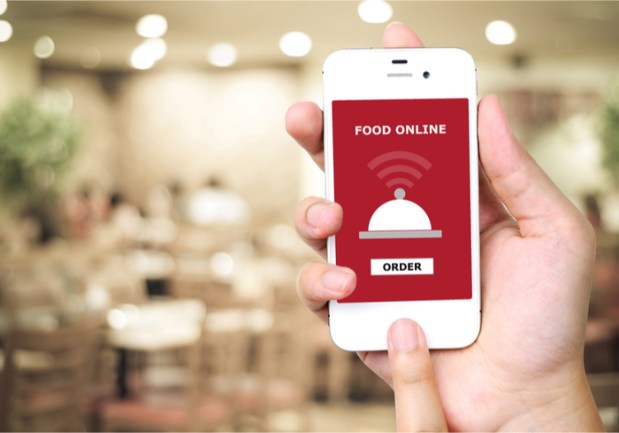The Rise Of Fast-Casual Mobile Order-Ahead

Consumers have been increasingly trading long waits in line for fast food by placing orders through mobile apps for a while now, but the trend is not limited to quick service restaurants (QSRs). Mobile order-ahead technology is gaining traction in all sorts of restaurant verticals, including more traditional sit-down restaurants. In that case, Dine Brands, which oversees IHOP and Applebee’s Grill + Bar, allows diners to order their food ahead of time before dining in, and pay their final check through the app.
“It’s like converting casual dining to fast food,” Dine Brands CEO Stephen Joyce told the New York Post in June. And, by adding the technology, restaurants such as Applebee’s hope to increase spending and bring in younger customers. At the same time, the latest edition of the PYMNTS Mobile Order-Ahead Tracker finds that restaurants and ordering platforms are making deals and acquisitions in an effort to offer more ordering channels and gain greater control over their offerings.
Check out the August Tracker for recent news and trends from around the Mobile Order-Ahead ecosystem, how restaurants are using mobile-order-ahead apps, and how the technology is gaining traction. The roundup includes mobile-order ahead efforts from Starbucks, Domino’s Pizza and others.
About 13 percent of U.S.-based Starbucks transactions are made with Mobile Order & Pay. With the coffee chain, loyalty and mobile continued to do some productive lifting in its fiscal third quarter of 2018, as those two factors contributed to an 11 percent year-over-year revenue increase — sales for the coffee chain reached $6.31 billion. Starbucks did not offer detailed quarterly figures about its overall sales via mobile in a late July release of its financial results. However, the chain’s Mobile Order & Pay service, which Starbucks recently opened up to non-members, gained a bit of steam in the company’s third quarter — in the fiscal third quarter of 2017, Mobile Order & Pay only accounted for 9 percent of U.S. company-operated transactions.
Grubhub paid $390 million to acquire LevelUp. Grubhub said in July that it had acquired LevelUp for that amount in cash, a deal which will spur further integrations with the nation’s top restaurant brands by providing additional channels to attract new diners. On a call in July, Grubhub president and chief financial officer Adam DeWitt stated that LevelUp, a seven-year-old firm based in Boston, serves 200 regional and national brands, with a point of sale (POS) approach that seeks to replicate each brand’s experience online. DeWitt said it is “not a demand-generating” tool like Grubhub but is focused instead on POS integration. LevelUp processes about 100,000 orders a day.
The share of daily app usage for Domino’s Pizza occurring at 6 p.m. is about 10 percent. The QSR noted in April that more than 150,000 Domino’s Hotspots were active nationwide, enabling customers to receive delivery orders in locations that don’t have traditional addresses — like a park, sports field or a beach. Domino’s said its stores located around the U.S. chose the Domino’s Hotspots, which are new locations where drivers can meet customers for curbside delivery. Russell Weiner, president of Domino’s, said in a press release announcing the new initiative, “We know that delivery is all about convenience, and Domino’s Hotspots are an innovation that is all about flexible delivery options for customers.”
One hundred and fifty Chick-fil-A restaurants are selling MealTime Kits via app-based ordering, counter or drive-through service. The chain is starting to experiment with the concept at locations in the greater Atlanta area. The idea behind the kits is to make it easier for customers to have their own Chick-fil-A experience at home — aided by pre-measured, fresh ingredients. Customers don’t even have to enter the restaurant to get one — the meal kits will be available at drive-up windows and can be ordered through Chick-fil-A’s app. Because variety is the spice of life, the kits will offer several recipes that are easy to follow and, of course, tie in the chicken that has made Chick-fil-A beloved by millions nationwide.
Fraud rates in the food and beverage industry have increased 60 percent in the past year. In particular, instances of account takeovers (ATOs) — when scammers are able to get into a user’s online account — are becoming a growing problem for the industry. ATOs are made possible when personal data is posted on online forums due to data breaches, giving criminals the information they need to take advantage of customers. According to Forter, there was a 31 percent increase in attempted ATOs on a year-over-year basis as of the third quarter of last year.
Beyond convenience, digital ordering technology may have some other benefits: Experts say that diners’ spending is higher when they order from an app, tabletop device or kiosk. Will more restaurants adopt this technology? Time will tell.
